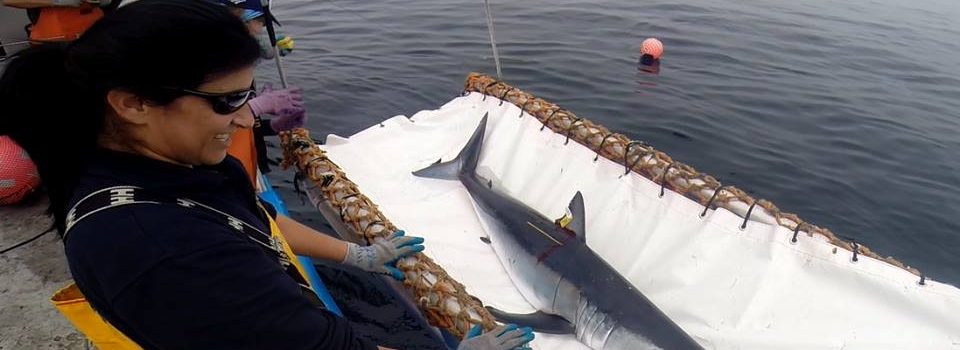Workshop of catch and landing of pelagic sharks statistics
June 21st, 2016 On June 7, in the auditorium of IFOP Valparaiso, workshop of catch and landing of pelagic sharks statistics was carried out. During the activity were present the following people: Chilean Customs, Undersecretary of Fishing, Servicio Nacional de Pesca, Instituto de Fomento Pesquero.
On June 7, in the auditorium of IFOP Valparaiso, workshop of catch and landing of pelagic sharks statistics was carried out. During the activity were present the following people: Chilean Customs, Undersecretary of Fishing, Servicio Nacional de Pesca, Instituto de Fomento Pesquero.
The objective of the workshop is to make a comparison between the catch and landing statistics from IFOP and Servicio Nacional de Pesca y Acuicultura regarding several species of highly migratory pelagic sharks.
Patricio Barria, researcher of IFOP said “in Chile, fishery for highly migratory resources, capture either as target or bycatch, different species of sharks; among them, we can mention the blue shark (Prionace glauca), shortfin mako shark (Isurus oxyrinchus), tiburón sardinero (Lamna nasus), bigeye thresher (Alopias vulpinus), bigeye thresher, dogfish (Alopias supercilliosus), Smooth hammerhead (Sphyrna spp.), pelagic stingray (Pteroplatytrygon violacea).
Currently, several of these species are found in Appendix II of CITES (Convention on International Trade in Endangered Species of Wild Fauna and Flora). This agreement ensures that trade is maintained within sustainable limits and it is expected that this year other shark species could be incorporated from the ones that are being exploited in our country.
According to the Convention, the Parties shall permit trade of species included in Appendix II, or trade for non-commercial purposes of species included in Appendix I, only in those cases where the Scientific Authority of the exporting State has advised that “such export will not be detrimental to the survival of that specie” (Article IV.2 (a)).
In 2014, shark species included in Appendix II of the Convention on International Trade in Endangered Species of Wild Fauna and Flora (CITES), were Whitetip sharp Carcharhinus longimanus; portbeagle shark Lamna nasus; hammerhead shark Sphyrna lewini; giant hammerhead shark Sphyrna mokarran, Smooth hammerhead Sphyrna zygaena, basking shark Cetorhinus maximus, whale shark Rhincodon typus, giant white shark Carcharodon carcharias, and manta ray Manta birostris and Manta alfredi. ”
Francisco Ponce of Subsecretaría de Pesca said about the workshop: “This was born because of a motivation of all the institutions participating in the decision making on standardizing the statistics of shark catch; the idea is to work jointly with the other institutions, in order to generate a more generalized statistics process, since the important thing is to control and prohibit the trade of vulnerable species”.
